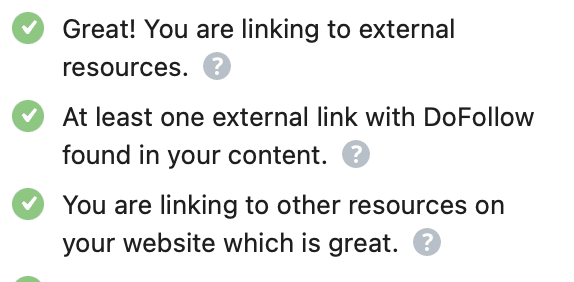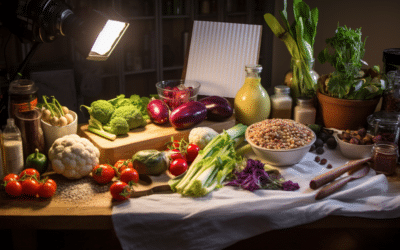Introduction
Dishing up tantalizing content is a vital part of food blogging, but it’s only half the recipe for success. The other half? Search Engine Optimization (SEO). SEO for food blogs involves carefully chosen keywords, engaging content, and a secret ingredient: internal linking.
Let’s dive into why internal linking is essential for boosting your site’s authority, improving user experience, and enhancing your website’s crawlability.
Understanding the Power of Internal Linking
In the world of SEO, internal linking is a powerful tool. These links connect the different pages on your website, creating a network of content that showcases the breadth and depth of your culinary knowledge. Strategic internal linking doesn’t just improve your SEO—it transforms your blog into a go-to resource for your readers, helping you to build website authority and secure a loyal audience.
Best Practices for Internal Linking in Food Blogging
Implementing an effective internal linking strategy involves more than just scattering links throughout your blog. Here are some best practices and tips to help you serve up success:
Relevance is Key
Links should connect related content. For instance, a post about vegan baking might link to an article about plant-based proteins. Relevant linking enhances user experience and guides search engine bots, helping them to understand your website’s structure.
Use Descriptive Anchor Text
Instead of using phrases like “click here”, use descriptive anchor text that gives a clear idea of the linked content. For example, “Discover our mouth-watering vegetarian recipes here.” This improves user experience and gives search engines more context.
Link Deep
While it’s essential to link to your top-level pages (like your blog’s homepage), remember to also link to your deeper content. These internal links can enhance the SEO for these more specific, detailed pages, improving site rankings overall.
For example, I will insert one deeper link here so you get what I mean. Read more about the biggest 5 SEO myths and misconceptions for food bloggers.
Implement a Thematic Structure
Group related articles under categories. This makes it easier for your readers and search engine bots to navigate your site, enhancing site navigation and overall user experience.
Boosting Crawlability with Internal Linking
Search engine bots crawl your site to index pages, helping them appear in search results when users make relevant queries. A well-structured internal linking strategy enhances your site’s crawlability, ensuring your best dishes get the exposure they deserve.
Remember, a healthy mix of internal and external links signals a balanced, authentic, and user-centric approach to search engines.
Both Rank Math SEO and Yoast SEO have a built-in feature that can help you to always remember to add links to your content.
Rank Math SEO linking check.

Yoast SEO internal link check.

Tools & Resources for Mastering Internal Linking in Food Blogging
Navigating the culinary world of SEO is made significantly easier with the right tools and resources. Here are a few key options that can help you whip up a successful internal linking strategy:
Google Analytics
Pros
– Free to use: As a part of Google’s suite of tools, Google Analytics offers a vast array of insights for no cost.
– Comprehensive data: Google Analytics provides a detailed look at your website’s performance, from user behavior to traffic sources.
– Customizable reports: You can tailor reports to your specific needs, allowing you to focus on aspects like bounce rates or average session duration.
Cons
– Learning curve: Google Analytics is incredibly robust, but that also makes it complex for beginners to navigate and utilize fully.
– Data accuracy: While generally reliable, it relies on cookies for tracking, which can sometimes lead to data discrepancies.
SEMrush
Pros
– Comprehensive SEO tool: SEMrush offers an all-in-one SEO toolkit, including keyword research, site audit, competitor analysis, and more.
– Backlink analysis: It provides insights into your site’s backlink profile, helping you understand and improve your site’s authority.
– Internal Linking report: SEMrush features a specific report for analyzing your site’s internal linking structure.
Cons
– Cost: While it offers a lot of advanced features, SEMrush comes with a significant cost, which might not be ideal for bloggers just starting out.
– Complexity: Like Google Analytics, SEMrush offers a vast array of features, which can be overwhelming for beginners.
Ahrefs
Pros
– Extensive backlink database: Ahrefs boasts one of the most comprehensive backlink databases available, which can give you deep insights into your site’s link profile.
– Detailed keyword research: Ahrefs excels at keyword research and competitive analysis, helping you identify opportunities to boost your SEO.
– Site Audit feature: This feature offers a health check for your website, including an internal linking analysis.
Cons
– Price: Ahrefs is an advanced SEO tool, and its pricing reflects that. It can be expensive for small-scale bloggers or beginners.
– Usability: While packed with features, Ahrefs can be complex and less user-friendly compared to other SEO tools.
Bonus FREE tool: Google Search Console
If you want to take your Food blogging to another level you have to start using Google Search Console. Besides analytics about search results it also has a feature related to internal linking.
To find it just scroll down in your Google Search Console dashboard and hit the “links” bar.

What you will see are several reports with information about both external and internal links, TOP linking or the “referral” sites, and the TOP linking or “anchor” text.
This is actually pretty useful as it helps you understand how people link to your content and what keywords and phrases they use. So in case you see some strange wordings you can always reach out to the site owner and change it to more relevant ones.
Google Search Console External links report from my food blog:

Google Search Console Internal links report from my food blog:

Remember, while these tools provide valuable insights and guidance, they can’t replace a solid understanding of your audience and clear, engaging content. Utilize these tools to enhance your SEO efforts and help your food blog reach its full potential.
Conclusion
In the gastronomic realm of food blogging, mastering SEO techniques like internal linking can be as satisfying as creating a perfect dish. By improving site rankings, building website authority, and enhancing the user experience, you can ensure your mouth-watering content is savored by a broader audience. Just like the perfect meal, a successful food blog is all about balance, and internal linking offers just that.
Call to Action
Want to feast on more SEO strategies for food blogs? Delve deeper into the world of SEO with our comprehensive SEO kits.
Contact us or stay connected for more appetizing tips and insights that will help you serve up success in food blogging.
Frequently Asked Questions (FAQs) on Internal Linking in Food Blogging
1. What is internal linking in SEO?
Internal linking refers to the practice of creating links that direct from one page to another within the same website. This technique aids in website navigation, distributes page authority throughout your site, and helps search engine bots understand the structure and content of your website.
2. How many internal links should I include in a blog post?
There’s no hard-and-fast rule for the number of internal links in a blog post. It’s more about providing valuable and relevant connections to your other content. Just ensure the links are natural and serve to enhance your readers’ experience. Overdoing it can make your content seem spammy.
3. What should my anchor text be for internal links?
Your anchor text should be relevant, and descriptive, and provide a clear indication of the linked content. Avoid generic phrases like “click here” or “this post”. Instead, use key phrases from the linked article or related terms.
4. Can internal linking improve my site’s SEO?
Yes, internal linking is a crucial aspect of SEO. It helps search engines understand your website’s structure and content. By strategically linking related pages, you can guide search engine bots and users to your key pages, improving their visibility and ranking.
5. Should I only link to my most popular posts?
While linking to your most popular posts can be beneficial, it’s also crucial to link to deeper, more specific content. This can help these pages gain more visibility and improve the overall site rankings.
6. How can I check the effectiveness of my internal linking strategy?
SEO tools like Google Analytics, SEMrush, and Ahrefs can provide insights into how users navigate your website and how search engines are crawling your pages. These insights can help you understand the effectiveness of your internal linking strategy and make necessary adjustments.
7. Is internal linking as important as external linking?
Both internal and external linking play important roles in SEO. While internal links help in distributing link equity and improving navigation within your site, external links (especially from high-authority sites) can greatly enhance your site’s credibility and authority. A balanced approach to both is often the best strategy.






0 Comments